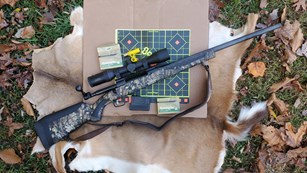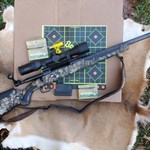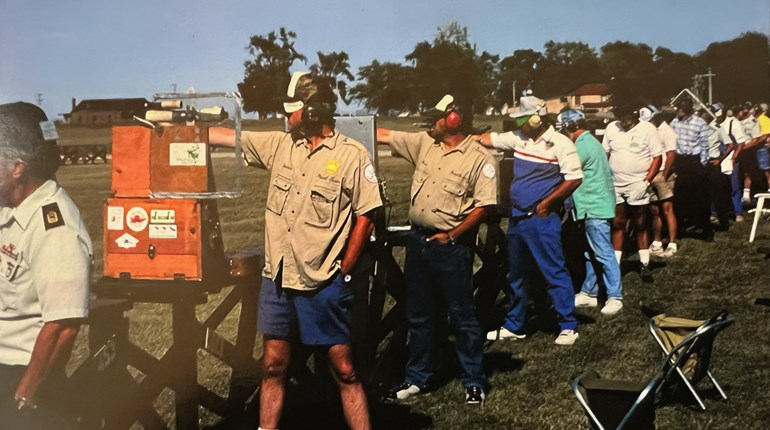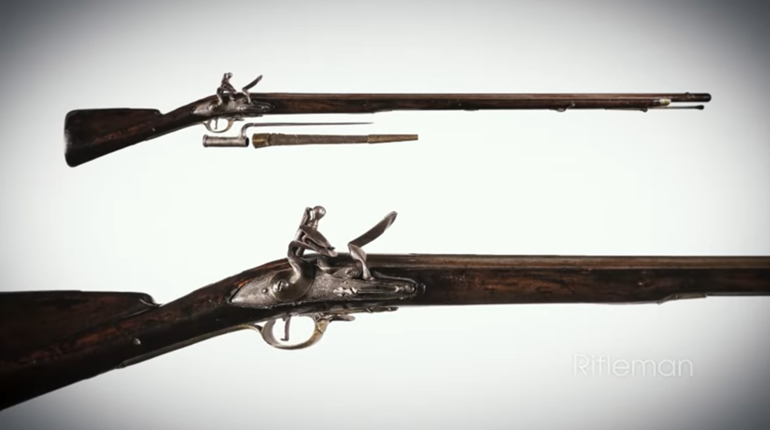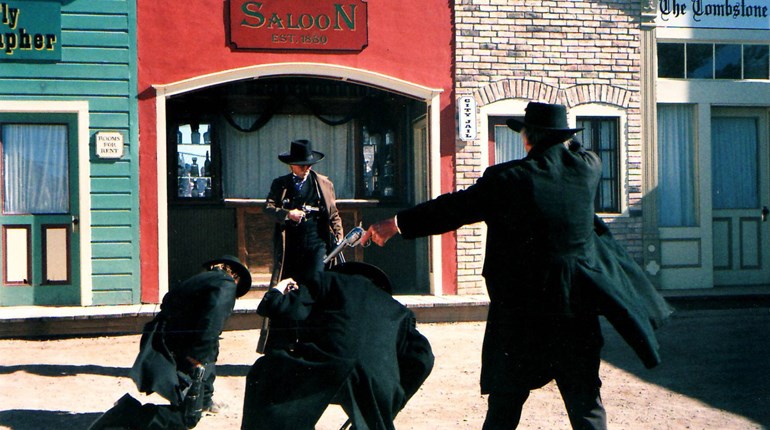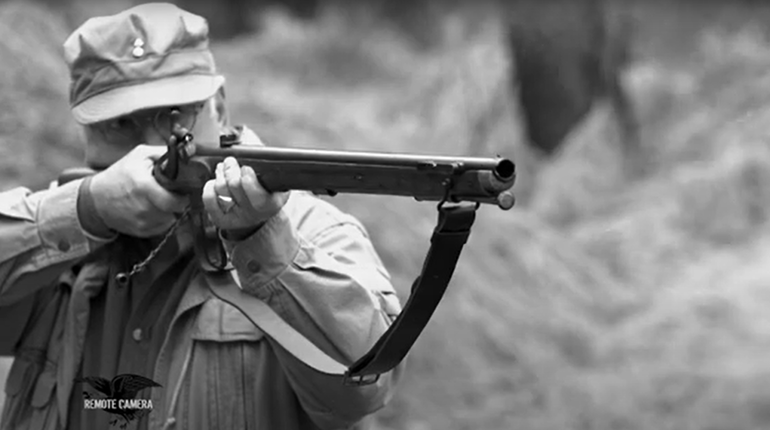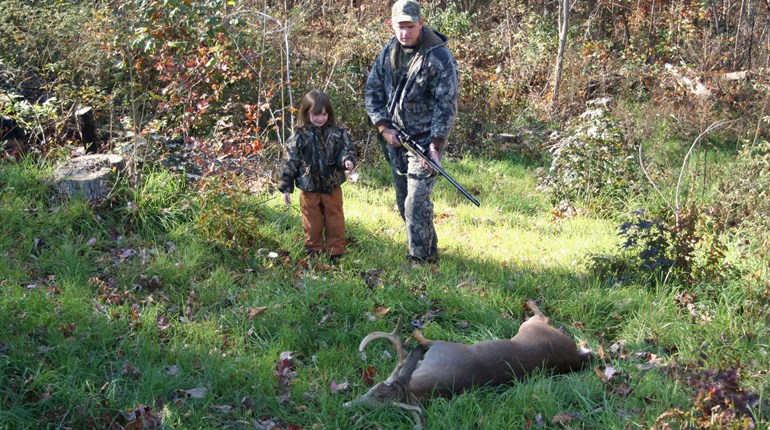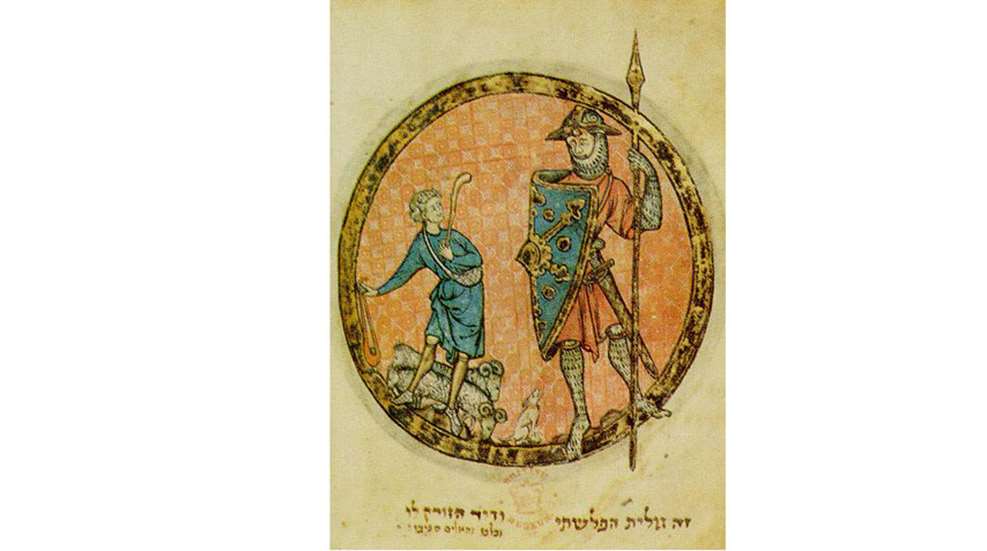
Ancient armies had three types of soldiers: infantry, cavalry and artillery. The infantry consisted of foot soldiers, the cavalry rode horses or drove chariots, and the artillery was made up of archers and those who operated catapults. But there was one additional group of specialized warriors whose presence on the battlefield often tipped the scales of war. They were known as slingers, the equivalent of today’s highly trained snipers.
We’ve all played with a slingshot a time or two as kids, a Y-shaped piece of wood with rubber straps attached used to launch a projectile. But make no mistake, the ancient sling was no slingshot and it was definitely not a toy. Far from it; a sling in the hands of a skilled warrior was a deadly weapon, just as lethal as sword, spear or arrow.
A sling consisted of a small leather pouch with a rope or leather strap two to three feet long attached to each side of the pouch. A loop on the end of one of the straps was slipped over the middle finger or thumb of the throwing hand, and the end of the other strap was pinched between the thumb and forefinger. A projectile—usually a stone about the size of a small chicken egg, but sometimes a metal ball or even a football-shaped chunk of metal known as a sling-bullet—was then placed into the sling’s pouch.
The projectile was hurled by swinging the sling around your head several times at speeds of six to seven revolutions per second, each revolution gaining more momentum. Then, at precisely the right instant, the slinger would release his grip and the projectile would fly toward the target. The process may sound simple, but it took years to become an expert slinger, the best at it having practiced their craft since boyhood.
Slings, like modern-day sniper rifles, were long-range weapons. An experienced slinger could hit an enemy up to 200 yards away. Irish slingers were said to be able to hit a coin as far as they could see it. Paintings from medieval times even show slingers bringing down birds in flight. (By the way, the modern distance world record for slinging is a whopping 437 meters, the length of nearly five football fields!)
But at such distances, just how powerful was a projectile once it arrived on target? According to historian Robert Dohrenwend, in terms of stopping power it was the equivalent of a .45-caliber handgun. And just in case a slung stone hit a warrior but didn’t kill him, the Romans kept a pair of specialized tongs handy for removing stones embedded in the unlucky soldier’s body—ouch!
The most famous fight in history involving a sling, which demonstrates its power, accuracy and effectiveness is the Biblical story of David versus Goliath. Three thousand years ago, the armies of Philistia and Israel were at a standoff across the Elah Valley, neither side willing to relinquish their advantage of occupying the high ground on the two ridges paralleling the valley. Each morning and evening for 40 days the Philistines’ greatest warrior, Goliath, would swagger down into the valley and taunt the Israeli army.
“Choose you a man and let him come down to me!” Goliath would roar. “If he prevail in battle and strike me down, we shall be slaves to you. But if I prevail and strike him down, you will be slaves to us and serve us.”
In the camp of Israel there were no challengers, as Goliath was truly a giant of a man. Standing some nine feet tall, he had been a warrior since his youth. He was also covered in armor and bristling with weapons.
What Goliath was challenging the Israeli soldiers to was something known as “single combat.” A common practice in the ancient world, it was a way to avoid the bloodshed and carnage of two massive armies clashing. A warrior from each side would be chosen to represent the whole. It was a winner-take-all proposition, but as far as the Israelites were concerned there were no takers.
Until one day when a certain teenage shepherd boy named David arrived on the scene. He happened to be visiting the Israelites because his father had asked him to take food to his three oldest brothers who were serving in the army. As a result, David heard Goliath’s taunts and, incensed by the giant’s insults, asked permission of King Saul to confront Goliath.
“When the lion or the bear would come and carry off a sheep from the herd,” David told Saul, “I would go after him and strike him down and rescue it from his clutches.” With no other options, Saul eventually agreed.
Goliath was expecting to fight a warrior such as himself, another infantryman who would engage in close-quarters combat. But David had no intention of playing that game. Instead, Goliath found himself facing a skilled and experienced artilleryman; a slinger—a sniper.
David wasted no time. Knowing that rounded stones would fly most accurately, he chose five smooth stones from a creek, placed them in his shoulder pouch, and took off at a run toward Goliath, closing the distance. For weapons, David carried only his sling and shepherd’s staff.
“Am I a dog that you should come to me with sticks?” Goliath sneered at David.
“You come against me with sword and spear and javelin,” David said to Goliath, “but I come against you in the name of the Lord Almighty, the God of the armies of Israel, whom you have defied!”
David placed a stone in his sling, whipped the sling around his head several quick revolutions, and let the stone fly, aiming at the giant’s exposed forehead just below the front of his helmet. Eitan Hirsch, a ballistics expert with the Israeli Defense Forces writes, “…David could have slung and hit Goliath in little more than one second—a time so brief that Goliath would not have been able to protect himself and during which he would be stationary for all practical purposes.”
The Bible says the stone sank into Goliath’s forehead and that he pitched forward onto the ground on his face. But David was taking no chances that the giant was dead. He finished the job by using Goliath’s own sword to cut off the giant’s head. Seeing their greatest champion defeated, the Philistine army fled.
Many people believe that David’s victory over Goliath was simply a lucky shot pulled off by a mere peasant boy. Quite to the contrary, Goliath was killed by a highly-skilled and experienced slinger: an ancient-world sniper. In actuality, Goliath never stood a chance.
And whatever happened to the shepherd boy, David? Later in life he would replace Saul, becoming Israel’s most famous and celebrated king. If you’d like to read the account of Dave and Goliath for yourself, it is found in the book of First Samuel, chapter 17.







